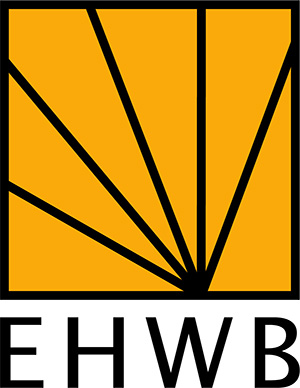Thewesternbalkans.
The protests in Serbia, which began after the collapse of a canopy at the train station in Novi Sad, which killed 15 people, escalated in nine months from popular outrage to an attempted coup d’état, accompanied by unprecedented violence.
A brief chronology of the protests and their demands shows the following evolution:
November 2024: “Punish the guilty!” – they demanded the resignation of the mayor of Novi Sad and the minister of construction for negligence in the reconstruction of the station.
January 2025: “Down with the government!” – Prime Minister Vučević was forced to resign; demands for “technocrats” instead of politicians.
August 2025: “Vučić is a dictator!” – the protesters declared war on the president and his SNS party, demanding a complete purge of the system.
However, the interpretation of the protests and their development in Russia and Europe (mainly in the EU) differs radically:
European Union: Key statements call for restraint and respect for fundamental rights. On 14 August, Guillaume Mercier, spokesperson for enlargement, condemned all violence and stressed the importance of the right to peaceful demonstration, freedom of assembly, expression and the media. The EU is closely following the situation, especially in the context of Serbia’s EU membership bid.
The EU Delegation to Serbia also called for non-escalation, proportionality in police actions and respect for fundamental human rights, including the rights of detainees. The EU has strongly rejected accusations that the protests are part of a “colour revolution” organised or supported by Western countries.
On 29 April 2025, Slovenian EU Enlargement Commissioner Marta Kos noted that “what we want is actually very close to what the protesters in the streets are demanding”. The demands for justice, media freedom and electoral reform overlap with the demands for Serbia’s EU membership.
A more controversial but more outspoken and clear position is taken by the European Parliament rapporteur for Serbia, the Croatian Tonino Picula, who stated that none of the key political players in the EU have any illusions about the personality of Serbian President Aleksandar Vučić and the type of government he leads. Serbia in its current state cannot become a member of the European Union, he is categorical. He adds: “In my opinion, Vučić’s government is legitimate, but the protesters are gaining legitimacy.”
Russia: seeks to present the protests in Serbia as inspired from outside, supports the official government and uses public and unofficial (e.g. through the FSB) support to strengthen Vučić’s position. On June 30, 2025, Kremlin spokesman Dmitry Peskov said that he did not rule out the possibility that the protests were an attempt at a “color revolution”, but expressed confidence that the Serbian leadership would soon restore order and the problems would be resolved.
On August 15, the Russian Foreign Ministry expressed concern about the escalation of the protests.
On August 20, Russian Ambassador to Serbia Alexander Botsan-Kharchenko told the Russia 24 TV channel: “The situation in Serbia remains under the control of the authorities, but has acquired the character of a color revolution. I would like to speak once again about the logic of the development of this process, which, of course, has the signs and elements of a color revolution, as the Serbian leadership and, above all, the country’s President Aleksandar Vučić have repeatedly stated. The instability in Serbia is necessary for the Brussels structures and Brussels institutions, which are dissatisfied with Vučić, dissatisfied with Serbia under his leadership. Serbia, although it defends its national interests and remains a candidate for membership in the European Union, nevertheless does not want to part with its sovereignty,” the Russian diplomat emphasized.
The Russian side has noted with suspicion the appointment of Andreas von Beckerath as the new head of the EU Delegation to Serbia. Beckerath is the former Swedish ambassador in Kiev from the time of the Euromaidan in Ukraine, which he actively supported and participated in. The Russians believe that in the context of the radicalization of the initially peaceful protests in Serbia, Beckerath’s appointment does not seem accidental.
A closer look at social networks and Russian media shows that pro-Russian protesters in Serbia expected a different reaction from Moscow. The Russian Foreign Ministry’s reaction to the situation in Serbia has been met with critical comments and anti-Russian slogans on social networks. The protesters’ views are gradually becoming anti-Russian. They are used as a trump card in official Serbian propaganda, and Western media are ready to support and amplify the notes of anti-Russian sentiment among the demonstrators.
There are also marginal comments in the Russian information space accusing Vučić of being a “Western henchman” and “an agent of the West under the guise of friendship with Russia”. Some observers and bloggers believe that the protests cannot be called a “color revolution” or “Maidan”, because Washington and Brussels need Vučić as a conduit for their interests in the Balkans and as a real counterweight to Russian influence in the region (giving lithium to the EU, buying Rafale fighter jets, selling ammunition to Ukraine, etc.). Perhaps part of the Russian leadership thinks the same way, but official Moscow usually adheres to the line of supporting the stability and leadership of Serbia, which creates difficulties in relations with opposition-minded Russophiles.
Will there be an external interfere in the absence of internal dialogue?
President Vučić officially responds to the numerous demands of the protesting students. The protesters demanded an “expert government” – and got endocrinologist Đuro Macut, a non-partisan professor of medicine with no political experience. People took this as a mockery, and the protesters’ irritation only grew.
Vučić’s replacements of officials proved to be ineffective solutions and only showed the president’s unwillingness to engage in dialogue with society. Systemic crises are not solved by replacing technocrats with no political weight.
But after nine months of protests, violent pressure is no longer possible, and the attempt to use force in August only provoked a shift towards radicalization. No concessions will save the situation now, as the authorities missed the critical moment and are on the verge of losing control of the capital.
Although the protests in Serbia have evolved from spontaneous popular anger to organized resistance and a coordinated campaign in nine months, they remain a spontaneous popular movement without real leaders. This creates a risk as to who can lead the protests and with whose support. The opposition is playing out a classic Maidan: “Get rid of everyone!” – but no one knows who will replace Vučić. A chaotic change of power without a clear plan will inevitably lead Serbia to institutional and economic collapse, and the country will become a training ground for geopolitical games.
In the information war being waged on the Serbian battlefield, the West has the better cards. The EU monitors, supports and demands, but does not organize or directly support the protests. However, Western NGOs provide protest infrastructure and resource support. Under the slogan “Freedom of speech!”, a media war is being waged to seize television channels and media assets from pro-Western companies.
Although Russia is very late in returning to the Balkans and in what some consider to be a Russian outpost – Serbia, Moscow is developing a strategy for a critical situation – without Vučić and Dodik. The worst-case scenario for the Kremlin would be that without these leaders, everything that has been achieved so far in Russian-Serbian relations would collapse.
Kremlin experts have estimated that since the end of 2024, Serbia has frozen all bilateral projects with Russia and de facto joined the sanctions against Russia (attempts to seize Russian property in NIS, joining the financial sanctions, which led to severe difficulties and the actual impossibility of payments between Serbia and Russia, refusal from joint Russian-Serbian projects in the cultural sphere, such as the Serbian side’s tacit refusal of an exhibition at the Hermitage in Belgrade, etc.).
Therefore, the Kremlin believes that it is necessary to think about tomorrow and to move to the priority development of the subnational level of cooperation in all areas, by creating and maintaining horizontal ties between individual regions, regardless of the political situation in individual Balkan countries. A foundation is being laid for building local ties between Russian regions and Balkan countries. This approach complements the Russian state strategy, focused on elites and key players, with a strategy aimed at horizontal interaction with an increasingly wide range of subjects and participants. In imposing its interests and influence in the Balkans, Moscow applies cheap or asymmetric means to slow down the integration of the region into Western institutions, while at the same time deepening ties with Serbia and Serbian groups throughout the region. “People’s diplomacy” must compensate for the weakness of Russian soft power, if it is not already too late.
The Western approach is almost entirely oriented towards the financial instruments of European integration. The millions of Serbian guest workers in Europe and America and their relatives in Serbia know very well the advantages of the Western system. But the deep essence of the Serbian internal conflict, which does not always have its visible manifestations, is that in the multi-layered Serbian society, 80% of Orthodox Serbs are genetically Russophiles. Part of the political crisis in Serbia is the opposition of Orthodox Serbs to the fact that their country is being pulled towards the “godless” West.
The spontaneous uprising of Serbian patriots against the corrupt system can be used by external forces for their own purposes. If the protests are successful, the new government may turn out to be even more pro-Western, ready to completely submit to the interests of Brussels.
Aleksandar Vučić, who is currently preparing hard for a meeting (“very soon”) with Vladimir Putin, has the difficult task of convincing the Russian leader of the opposite.





